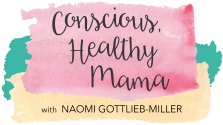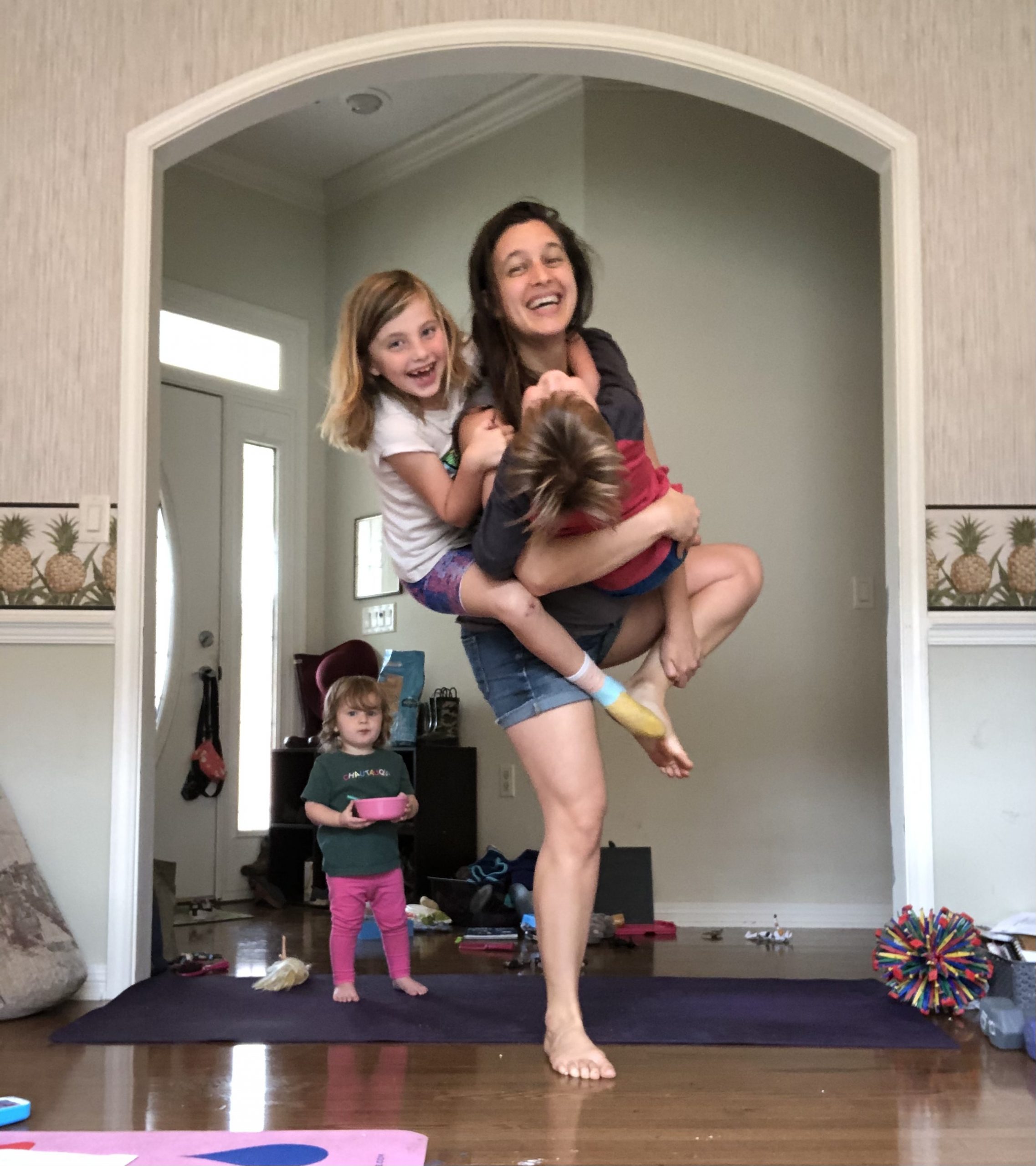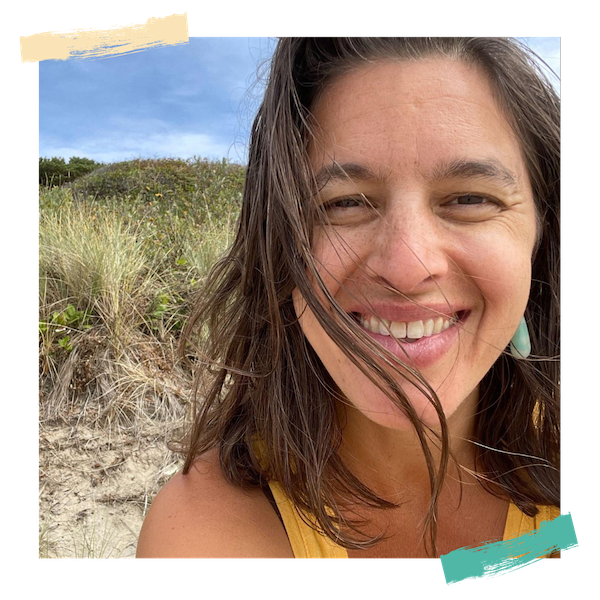Do you want to know how to improve your balance? I can tell you, but I bet my answer will surprise you.
My guess is that when you think about improving your balance, you think you need to work on leg strength or core strength or glute strength. You also might assume that you need to work on your feet or your ankles or your hips. And all of those guesses are good. All of those actions will serve you well.
But you’d still be missing the most important thing when it comes to balance.
If you really want to improve your balance, you have to change your relationship with balance.
I bet you didn’t even know you had a relationship with balance, but you do.
And maybe that’s part of your challenge when it comes to balance.
So let’s start with this question:
If I said, “today in our yoga class, we’re going to do all of the standing balancing poses,” what face would you make?
Part of the problem is that most people think of balance as stillness. No wobbling, no wiggling, no swaying in the breeze. Just perfect stillness.
This is not balance.
This is stillness.
The other problem with this notion of balance is the idea of perfection.
Balance and perfection are not the same thing, nor are they even trying to achieve the same thing.
Perfection is a tool of the patriarchy that oppresses all of us, even those who benefit from the patriarchy. Aiming for perfect will only create stress, exhaustion, frustration, and potentially trauma. Lots of people use these 2 ideas of balance — perfection and stillness — as a measure of their ability to balance, which leads to the belief that balance is unattainable (much like stillness and perfection. Go figure.)
The thing is, balance is not interested in stillness or perfection.
Balance is all about the movement through the midline.
If you shift really far in one direction, your ability to balance is whether or not you can pull back to center.
Your balance also isn’t measured by how often your lifted foot taps down. This does not mean you are bad at balance. The question is more about whether or not you choose to lift your foot back up.
Balance also doesn’t care how high you lift the leg you’re not standing on off of the floor. It doesn’t matter if that leg is high up or lower down, or even if it lightly taps the floor.
Balance is all about flowing with the wobbles and the wiggles and the swaying and still staying steady within yourself.
Think about this in an off the mat scenario:
Does every little thing throw you off center or are you able to weather the storms of life without totally losing your shit?
This doesn’t mean that you have no emotions or don’t react with high intensity. Instead it means you are able to meet the conflicts or challenges in life with a clear head and conscious intention.
This also doesn’t mean that if you lose your cool that you are out of balance or that something is wrong with you. There will be situations and experiences that will throw you off center. They might derail you for a long while. You will most definitely lose your cool. Not all situations and life experiences are equal. Not all balancing poses are, either.
The point is this:
If you’re aiming for a balance that requires stillness or perfection, you are not aiming for balance.
You are intentionally making it harder for yourself to actually work on the mechanics of balance, which involve embracing the wobble, wiggle, and sway.
Plus, thinking of balance as either stillness or perfection will lead you to believe you are less capable if you cannot maintain stillness in form or perfection in practice. Neither is accessible and both are oppressive.
Once you’ve cleared away those pesky, problematic ideas associated with balance, you can actually start working on some simple actions that will help improve your balance.
How to Improve Your Balance: Practical, Physical Actions
Work on creating equal weight on your foot.
This means the ball of your foot, as well as your heel; the big toe side of your foot as well as the pinky side of your foot. When you’re working on balance, if you put a little extra energy on rooting through the inside edge, that might help a little more.
Put a little bend in your balancing leg.
This almost always helps me feel more supported in my balancing leg, primarily because I can use my muscles more to create stability around my joints.
Be close to a wall.
Use the wall to gently tap or lean onto, then when you feel a little steadier, you can ease yourself off. When you start to lose your balance, as lightly as you can tap the wall again. Repeat this until you need the wall less and less, with lighter and lighter touches. This isn’t cheating. This is using a tool to over time to build capacity.
Keep lifted leg closer to the ground.
This doesn’t apply to all balancing poses, but works for some. Same rules apply as using the wall. Tap down to the floor when you start to feel wobbly. Make it as lighter tap or touchdown as you can.
Stretch out as much as you pull in.
Squeezing inward in great. Depending on the balancing pose, you might want to squeeze your inner thighs, your feet or your butt cheeks. I’d avoid squeezing your jaw because that’s just uncomfortable and won’t help you balance. Just make sure you are using that squeeze to stretch out, too. If you only contract, you will end up off balance faster.
Try balancing on non-flat/non-hard surfaces.
Many people only practice balancing when they are on a yoga or exercise mat. Or on hard floors. Try balancing on carpet or grass or sand. Or even try balancing in shoes, if you don’t ordinarily. Notice the different challenges presented by different surfaces.
Need more support?
Check out my video on YouTube 👇🏽



